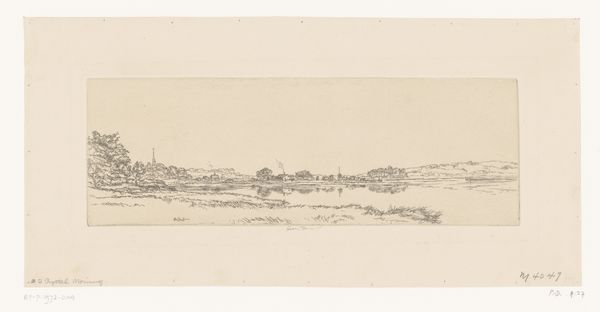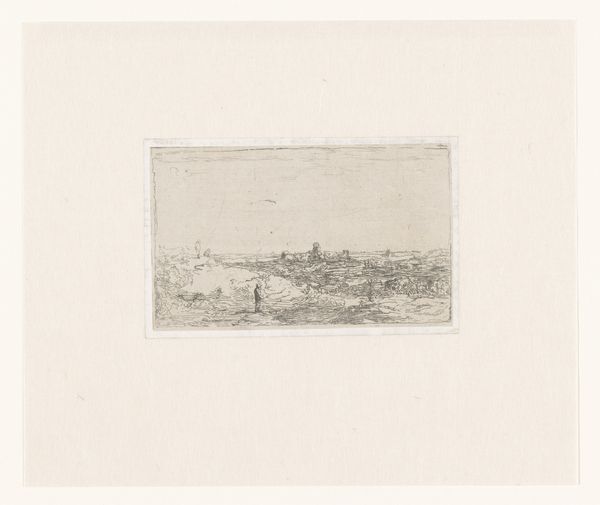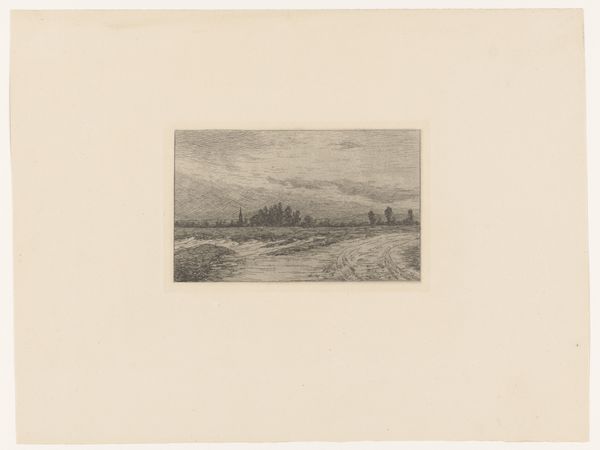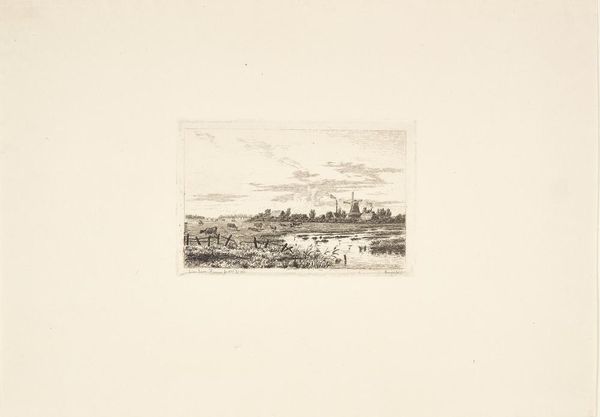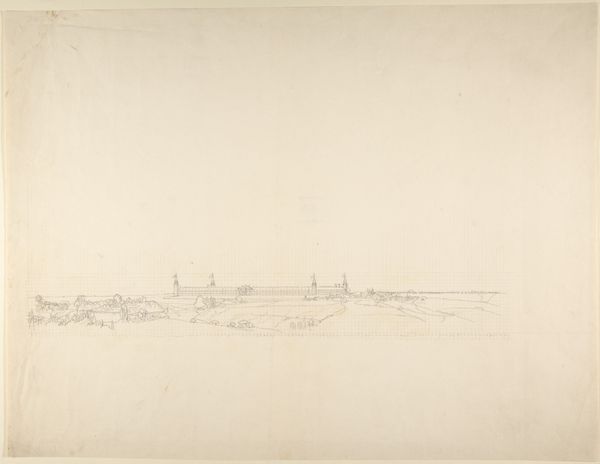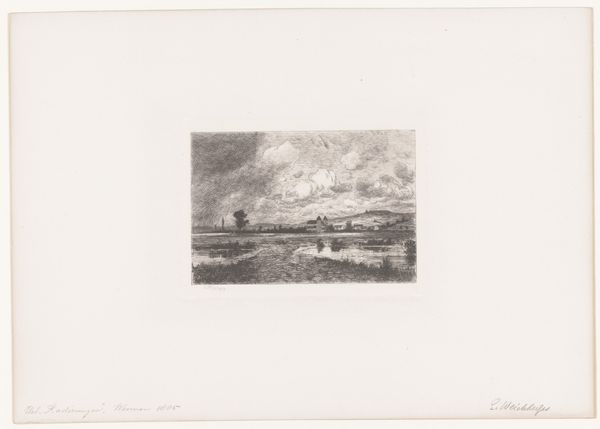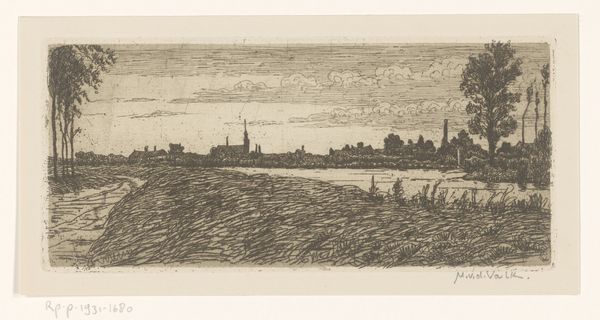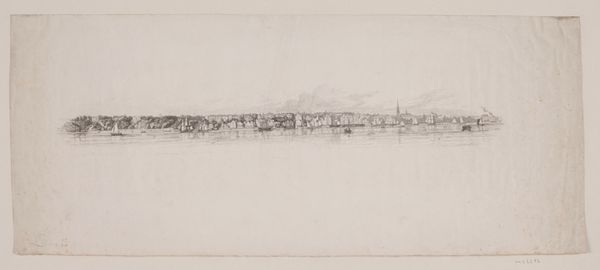
print, etching
# print
#
etching
#
landscape
#
cityscape
#
genre-painting
#
realism
Dimensions: height 184 mm, width 340 mm
Copyright: Rijks Museum: Open Domain
Curator: Welcome. Today, we are observing "Stadsgezicht met weilanden op de voorgrond," or "Cityscape with meadows in the foreground," created between 1859 and 1891, currently held at the Rijksmuseum. The artist is Elias Stark. Editor: A very muted scene, almost monochrome. A sense of serene rurality clashing subtly with a city barely present on the horizon. Somber. Curator: Indeed. It’s an etching, so the material production is intaglio printmaking. Notice the fine lines scratched into the metal plate. We’re seeing an industrialized print technique applied to a rather nostalgic landscape. The subtle gradations achievable through the etching process convey this interplay effectively. It was reproducible, consumable imagery during rapid urbanization. Editor: The distant spires—aren’t they powerful symbols of aspiration and community identity? Note the presence of what look like farmworkers contrasted to this very orderly collection of townhomes, which brings to mind progress versus the simple existence of earlier eras. Curator: Stark, in his choice of subject, and indeed of medium, situates the individual within broader shifts in social and material existence. These farmworkers and animals become almost an artifact amidst growing urban sprawl, highlighting both loss and persistence in labor, the rise of capitalism. Consider the market for this artwork; mass-produced to satiate urban consumer tastes. Editor: Fascinating. But looking at it, don't you also see that compositionally, it guides our eye towards these very distant points of connection - like the steeples, symbols of a community striving towards higher ideals? Almost spiritual... and very distant for our fieldworkers to be a part of! Curator: An understandable perspective! Yet for me, such symbolism always returns to materiality; this image was a mass-producible commodity. These rural workers exist here as picturesque representations of labor being rapidly altered, becoming historical symbols even as the etching was pressed. Editor: And through these material transformations, the symbols persist – perhaps with shifted meaning but still acting as potent reminders. Thank you; looking at this now, it's hard to miss those dynamics playing out. Curator: My pleasure. Materiality and symbolism, in continual conversation!
Comments
No comments
Be the first to comment and join the conversation on the ultimate creative platform.
